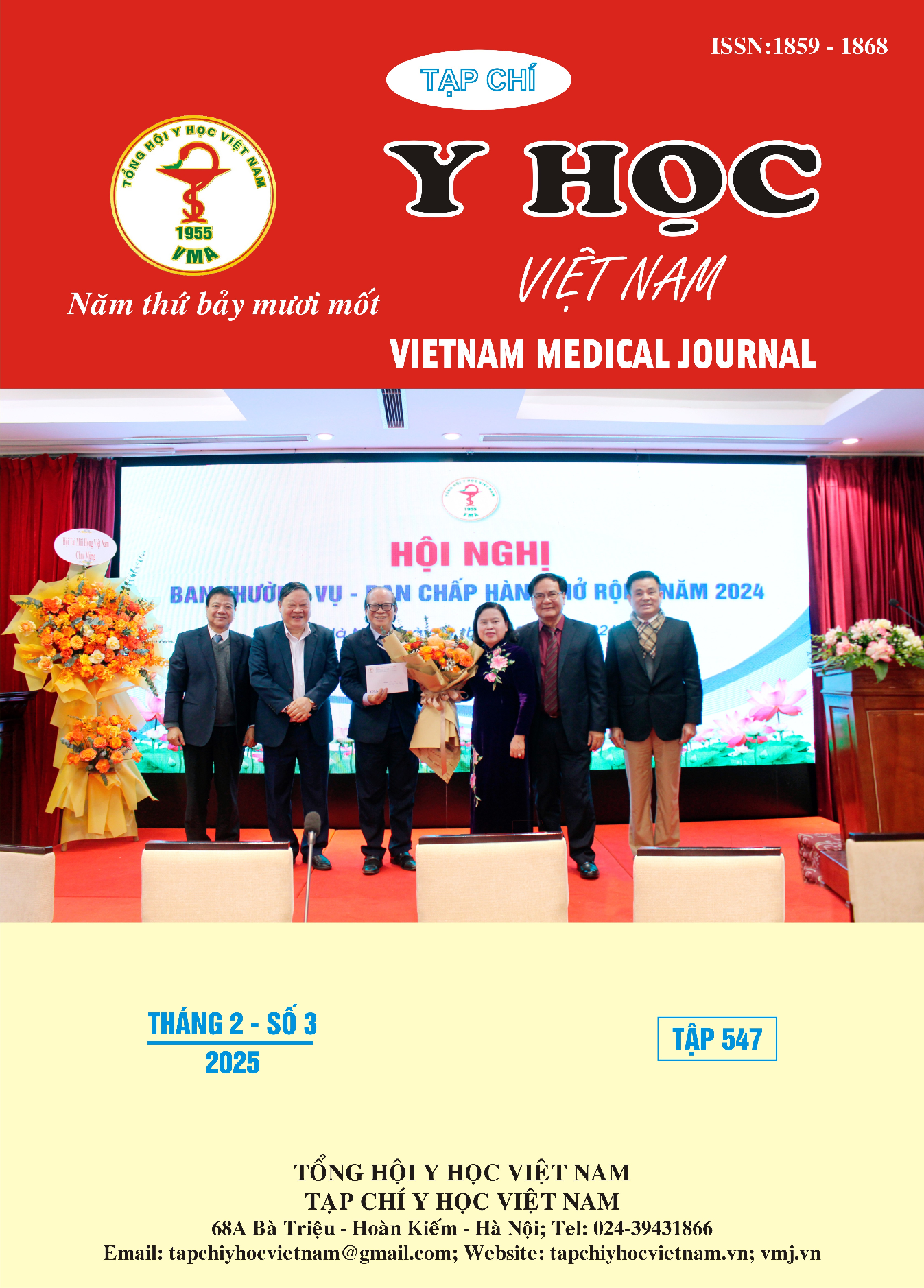ADHERENCE TO TREATMENT AND RELATED FACTORS IN PATIENTS WITH TYPE 2 DIABETES MELLITUS AT UNIVERSITY MEDICAL CENTER HO CHI MINH CITY
Main Article Content
Abstract
The objective of this study was to determine the proportion of treatment adherence and its associated factors among outpatients with type 2 diabetes. The study was conducted at the Endocrinology Clinic of the University of Medicine and Pharmacy Hospital in Ho Chi Minh City from March to May 2024. A total of 273 outpatients from the University of Medicine and Pharmacy Hospital at Ho Chi Minh City participated in structured interviews assessing various aspects of treatment adherence. The findings revealed that the medication adherence proportion was 74.0%, nutritional adherence was 41.8%, physical activity adherence was 75.1%, and adherence to glycemic control and regular health check-ups was 22.3%. The study identified significant associations between medication adherence and factors such as gender and economic status. Nutritional adherence was linked to education level and cohabitation status, while physical activity adherence was associated with gender, age, occupation, education level, marital status, and the use of health insurance for medical examinations. Despite relatively high adherence proportions to medication and physical activity, the adherence proportions for regular health check-ups and nutritional guidelines were notably low. Consequently, there is a need to enhance health education, develop mobile applications to aid patients in monitoring and managing their treatment, and improve financial support systems for economically disadvantaged patients.
Article Details
Keywords
Treatment adherence, MCQ scale, SDSCA scale, IPAQ-SF scale, type 2 diabetes patients, factors affecting treatment adherence
References
2. Global diabetes data report 2000 — 2045. Published October 11, 2023. Accessed October 11, 2023. https://diabetesatlas.org/data/
3. Home, Resources, diabetes L with, et al. IDF Diabetes Atlas 2021 | IDF Diabetes Atlas. Published October 11, 2023. Accessed October 11, 2023. https://diabetesatlas.org/atlas/tenth-edition/
4. Zhang ZP, Premikha M, Luo M, Venkataraman K. Diabetes distress and peripheral neuropathy are associated with medication non-adherence in individuals with type 2 diabetes in primary care. Acta Diabetol. 2021; 58(3): 309-317. doi:10.1007/s00592-020-01609-2
5. Baral J, Karki KB, Thapa P, et al. Adherence to Dietary Recommendation and Its Associated Factors among People with Type 2 Diabetes: A Cross-Sectional Study in Nepal. J Diabetes Res. 2022;2022:6136059. doi:10.1155/2022/6136059
6. Lâm Tấn Hiển. Tuân Thủ Điều Trị và Các Yếu Tố Liên Quan ở Bệnh Nhân Đái Tháo Đường Type 2 Điều Trị Ngoại Trú Tại Bệnh Viện Trưng Vương Năm 2019. Khóa Luận Tốt Nghiệp Bác Sỹ Y Học Dự Phòng. Đại học Y Dược TP.HCM.
7. Thạch Thị Út Huyền, Hân ĐTN, Trang NTM. Tuân thủ điều trị và các yếu tố liên quan ở bệnh nhân đái tháo đường tuýp 2 điều trị ngoại trú tại bệnh viện đa khoa Trà Vinh năm 2020. TC YHDP. 2021;31(9 Phụ bản):178-187. doi:10.51403/0868-2836/2021/452
8. Khoa nội tiết - Bệnh Viện Đại Học Y Dược. Accessed May 31, 2024. https://noitiet.umc. edu.vn/


